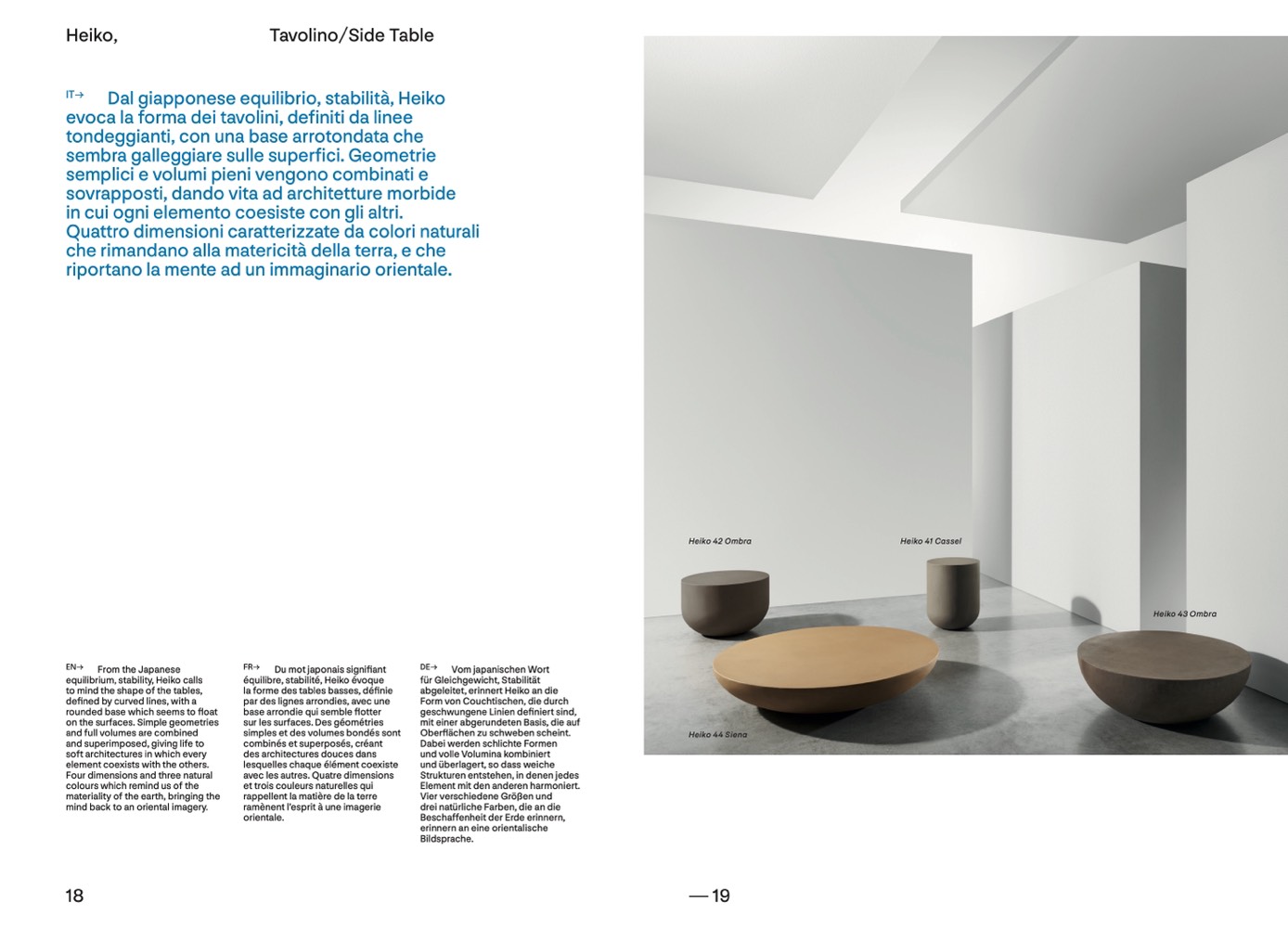
Heiko,
Tavolino/Side Table
Dal giapponese equilibrio, stabilità, Heiko
evoca la forma dei tavolini, definiti da linee
tondeggianti, con una base arrotondata che
sembra galleggiare sulle superfici. Geometrie
semplici e volumi pieni vengono combinati e
sovrapposti, dando vita ad architetture morbide
in cui ogni elemento coesiste con gli altri.
Quattro dimensioni caratterizzate da colori naturali
che rimandano alla matericità della terra, e che
riportano la mente ad un immaginario orientale.
IT→
EN→ From the Japanese
equilibrium, stability, Heiko calls
to mind the shape of the tables,
defined by curved lines, with a
rounded base which seems to float
on the surfaces. Simple geometries
and full volumes are combined
and superimposed, giving life to
soft architectures in which every
element coexists with the others.
Four dimensions and three natural
colours which remind us of the
materiality of the earth, bringing the
mind back to an oriental imagery.
FR→ Du mot japonais signifiant
équilibre, stabilité, Heiko évoque
la forme des tables basses, définie
par des lignes arrondies, avec une
base arrondie qui semble flotter
sur les surfaces. Des géométries
simples et des volumes bondés sont
combinés et superposés, créant
des architectures douces dans
lesquelles chaque élément coexiste
avec les autres. Quatre dimensions
et trois couleurs naturelles qui
rappellent la matière de la terre
ramènent l’esprit à une imagerie
orientale.
DE→ Vom japanischen Wort
für Gleichgewicht, Stabilität
abgeleitet, erinnert Heiko an die
Form von Couchtischen, die durch
geschwungene Linien definiert sind,
mit einer abgerundeten Basis, die auf
Oberflächen zu schweben scheint.
Dabei werden schlichte Formen
und volle Volumina kombiniert
und überlagert, so dass weiche
Strukturen entstehen, in denen jedes
Element mit den anderen harmoniert.
Vier verschiedene Größen und
drei natürliche Farben, die an die
Beschaffenheit der Erde erinnern,
erinnern an eine orientalische
Bildsprache.
Heiko 44 Siena
18
— 19
Heiko 42 Ombra
Heiko 41 Cassel
Heiko 43 Ombra

